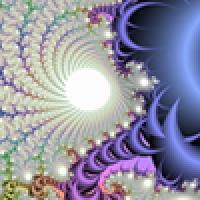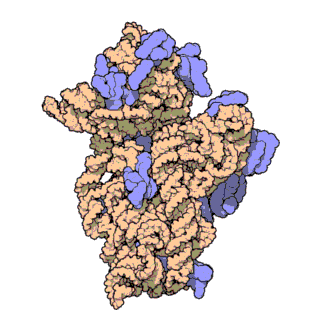
What is creativity?
Where were your most creative experiences at school? In art class? In music? English? In your maths lesson? That last one might not be the obvious choice for many of us, unless you were lucky enough to have a really inspiring maths teacher. But that is exactly the type of opportunity we are hoping to create for maths students aged 7-16 as part of the project, Developing Mathematical Creativity, with our sister site, NRICH.
One aspect of the project that we are particularly excited about is highlighting the role of creativity in mathematics research. All mathematicians tell us that doing original mathematics is highly creative – but what exactly do they mean by that? We asked some researchers from a range of subjects about the role of creativity in their work.
Working within constraints
We started with David Berman who has a very interesting perspective on creativity. As well as being a theoretical physicist at Queen Mary, University of London, he also has a long standing collaboration with the Turner prize winning artist, Grenville Davey. Deconstructing the artistic idea of creativity, Berman told us that rather than an unbridled release of ideas where anything is possible, beauty comes from creating work withing very tight syntactic constraints. "Think of music: the tight system of key and chord makes music very constrained and yet capable of amazing emotional power," he said. For example Schoenberg's experiments with atonal music, though completely new and boundary breaking, were far from unconstrained. "Maths is like this. There are enormous syntactic constrains but still enough freedom to say something new. The beauty lies in between the constraints of syntax and the freedom of meaning."
Taking risks
David Spiegelhalter, the Winton Professor for the Public Understanding of Risk at the University of Cambridge, said he recognised creativity in research when someone makes a leap between two different areas, making new connections between them, perhaps using a tool from one area in another. And, as is fitting for someone with his expertise, Spiegelhalter highlighted that creativity is about stepping into the unknown and taking risks, something that can be different to our experience of mathematics in school. "Research is different to maths at school because you don't know where it will end, nobody has gone there before to tell you the answer but you have a feeling that something will come out."
Asking good questions
Ben Allanach, a professor of theoretical physics from the University of Cambridge, also mentioned this exploratory nature of creativity and research: "You don't know the answer [to the questions you're asking] before you start… You don't even know if there is an answer." He gave some examples such as inventing new models of particle physics, or new algorithms for analysing data. In this sense, a key aspect of creativity is the ability to ask good questions. "Creativity has a role in research in deciding which projects to work on," said Allanach. And as well as creating or choosing good questions that, as Spiegelhalter said, you have a feeling that something will come out, it's also important to be able to spot when your questions turn out to not be such good choices after all. "Personality and judgement play a large role," said Allanch. "When do you persist? When do you struggle on and when is the time to give up on a line of enquiry?"
Interestingly, our discussions with researchers from chemistry, although quite a different field from mathematics, produced some very similar ideas. Charlotte Williams, Senior Research Scientist at CSIRO in Australia, also emphasised the importance of asking good questions, persevering with them, and constantly reviewing if you were still going in the right direction. "Most research projects come from a position of fundamental direction: you need your research grounded in reason, precedent and understanding of the subject, but then you need to innovate and that is where the creativity comes in," said Williams. But, as well as being able to ask good questions, Williams also emphasised that persistence was an important attribute to research success.
Persistance

Animation of the small subunit of the Thermus thermopiles ribosome. RNA shown in orange, protein in blue. (Image in public domain)
Although the emphasis is often on the new, Williams made the point that great research also comes from thorough investigation and understanding of current work. "Nobel prize winner Ada Yonath (in Chemistry, 2009), said just this when I heard her speak. She would never have solved the structure of ribosome or got the Nobel prize if she hadn’t continued to do the same work for her whole career. And importantly have the funding bodies and universities support that (and not say, ‘you’ve been trying to do this for too long, do something new’...). She said she thought that tenacity and follow through in research was vastly under-rated." Perhaps this persistence with an idea, following it through, testing it out and really gaining an understanding of what is going on, is also a valuable element of creativity.
Williams felt that it is only once you have learnt the fundamentals of chemistry at school and in undergraduate degrees, that real creativity is possible. This could be seen as in contrast to our aim to encourage creative thinking in maths from the very earliest ages. Perhaps this is core difference between the subjects of maths and chemistry - there are a lot more costs and dangers associated with doing chemistry than playing with maths. "Too much creativity [in reasearch] and you could waste a lot of time and effort," says Williams. "So it's the combination that is key: thinking of a new direction or interesting area to explore that has a reasonable likelihood of being successful." Also, due to the real physical dangers of some chemical reactions, it's not appropriate to just let students follow their own ideas without proper supervision. "I respect and appreciate a student’s thoughtfulness and creativity but given that they are students, they still need guidance. In particular in chemistry, going off being creative without having the appropriate experience or without having consulted one's supervisor, can be really dangerous to be honest."
Collaboration and interaction
The final theme that really emerged from these researchers was the importance of interaction and collaboration in allowing for creativity in research. Williams said the process of attending conferences, listening to seminars and staying in touch with new research stimulates collaboration with people that might lead off into unexpected directions. Allanach too said that creativity often comes from interacting with others.
So what role do you think creativity has in learning and researching maths, both as an academic but also as a student? What have been your favourite experiences of mathematical creativity?
About this article
This article was inspired by content on our sister site Wild Maths, which encourages students to explore maths beyond the classroom and designed to nurture mathematical creativity. The site is aimed at 7 to 16 year-olds, but open to all. It provides games, investigations, stories and spaces to explore, where discoveries are to be made. Some have starting points, some a big question and others offer you a free space to investigate.
Anonymous
I'm an avid reader of Plus maths and was reading the article 'What is creativity?' this morning and found your site mentioned.
The article mentioned really inspiring maths teachers, and I'd like to mention one from about forty years ago! His name was Vincent Styles and as of a few years ago he was still teaching at Bishop Challoner School in Shortlands. Mr Styles was am amazing teacher: he cut up ice-cream cones to demonstrate conic sections, built a binary adder, with two coloured LEDs to demonstrate binary and briefly interrupted a class he was teaching to explain what hyperspace was to me! (The class had nothing to do with hyperspace, and I'd come across the word while watching Star Trek a few days before.)
He's the reason that I started finding maths facinating and eventually read Pure and Applied maths for my Bachelor's degree.
I have no idea what, if any, use you can put this information too, but if Mr Styles is still around and you can use his prodigious creative skills for making maths more accessible, I would be a very happy former student. At the very least I've publicly praised a truly remarkable man.
All the very best, and thank you for making my favourite subject more accessible to kids!
Prabhakar Rajasingham